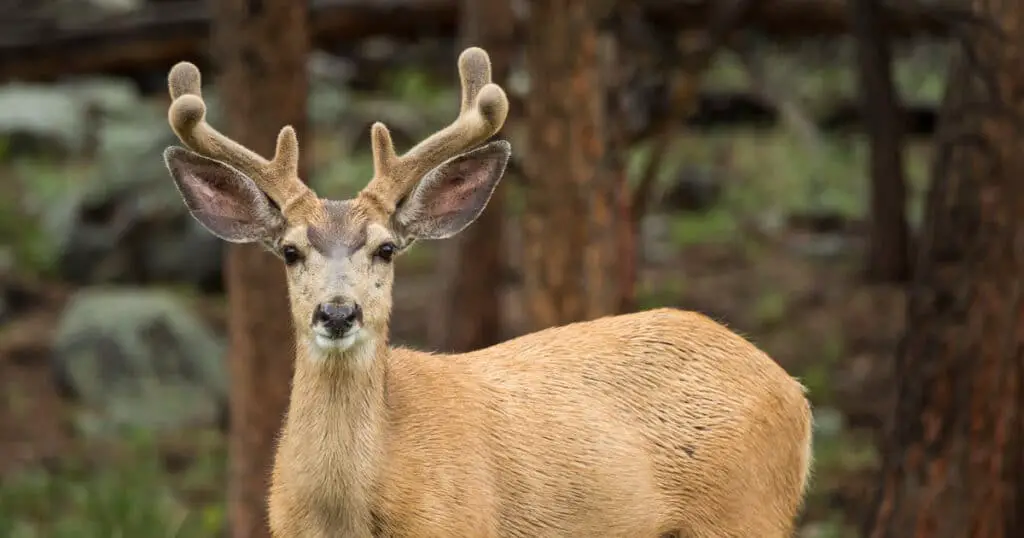Antlers are a male deer’s most defining characteristic. Hunters are always on the lookout for a good set of antlers to hang on their walls or to use in interesting ways around the home. But when do deer start growing antlers? We’ll answer that question, and some provide some interesting related information in today’s article.
When Do Deer Start Growing Antlers? (Answered)
Table of Contents
ToggleMale deer start to grow their antlers during their first year of life, but it isn’t until they are mature that they grow large, impressive racks of antlers. Deer shed and re-grow their antlers every year, which is one of the things that makes antlers different than horns.
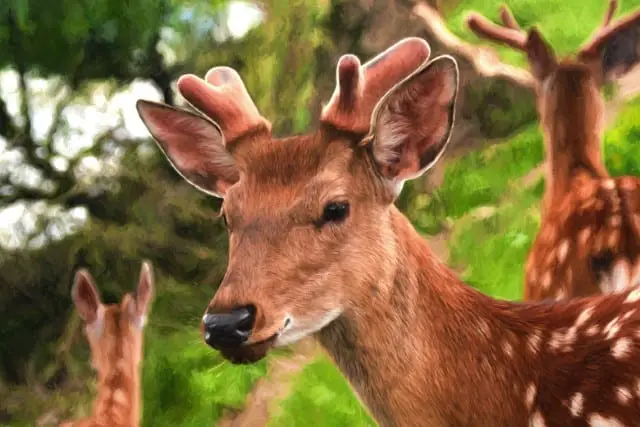
Bucks shed their antlers during the winter, after mating season concludes and start re-growing them during the spring.
Let’s go over the antler growth process in most species of deer. We’ll also explain how antlers (and deer) change with the seasons.
Let’s get started.
At What Age Do Male Deer Grow Antlers?
Like most animals, deer are normally born in the spring. They won’t develop antlers during the first few months of life.
Baby deer (often called fawns) need to be able to drink milk from their mothers. Antlers would get in the way of that.
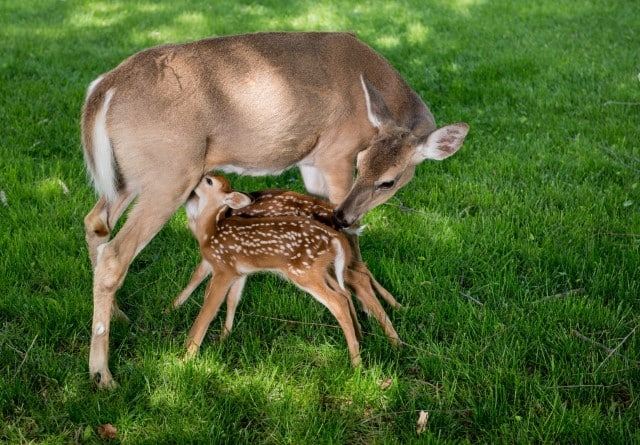
In any case, male deer this young don’t need antlers. The primary purpose of antlers is to use in competition during the rutting season.
The rut (mating season) is when male deer compete for mates, part of their mating behavior. It usually happens in the late fall and early winter months.
Bucks grow pedicles before they grow antlers. Pedicles are small bumps on the top of the skull.
These start to grow when the male deer is about four or five months old. We sometimes call young male deer with pedicles “button bucks,” as the pedicles look like small buttons or bumps.
Antlers will start to grow at about ten months of age. This varies from deer to deer, and the month in which a deer is born can affect this.
Deer born later in the spring might take longer to grow antlers than deer born earlier.
Antlers vs Horns
We have a full article explaining the difference between antlers and horns, but it’s worth reviewing briefly here since many people confuse and misuse these terms.
Deer grow antlers, not horns.
Antlers are shed and regrow every year.
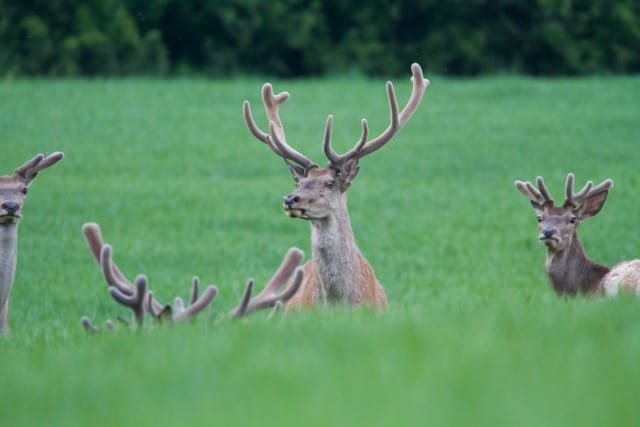
By contrast, an animal with horns only gets one set for its entire life. In some animals, the horns continue to grow throughout the animal’s life.
Goats and sheep are examples of animals with horns. With the exception of wild sheep (bighorn sheep for example), these horns serve more of a defensive purpose than one integral to their mating rituals.
A buck’s antlers, by contrast, are necessary and primarily intended for use during the rut. Antlers are largest and at their strongest during the rut and mating season.
Antlers are made of bone. Horns, on the other hand, have bone in the center but this is coated with a thick layer of keratin.
Antlers grow much faster than horns. The speed of antler growth makes them a fascinating object of study for scientists.
Scientists believe that better understanding antler growth could help in cancer research. After all, cancer cells are the only other types of cells to grow as quickly as antlers.
What Time of Year do Deer Begin Growing their Antlers?
Deer begin growing their antlers during the springtime.
Antlers are small early in the spring, at which time they’ll have a velvety texture.
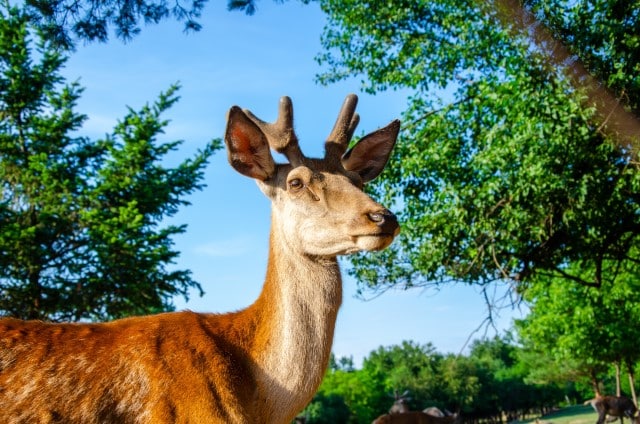
This velvet is a type of fur. The velvety coating on a deer’s antlers will shed during the late summer.
Bucks will often smash and rub their antlers against trees to remove the velvet, and since this is living tissue, they take on a gory appearance as the velvet sheds.
They try to get rid of the velvet as soon as they can after the antlers are fully developed. That’s because it’s not good during the mating season.
A deer’s nutrition impacts the precise time at which antlers grow, and can impact the size and strength of their antlers as well. Remember, antlers are bone, and growing bone requires protein.
The antlers will start to grow sooner if a deer has a very nutritious diet. A deer with a healthy diet will have faster-growing and longer antlers.
A buck’s antlers grow slightly longer each year. Once a buck reaches a certain age, the antlers will go in the other direction, and he will have slightly smaller antlers each year.
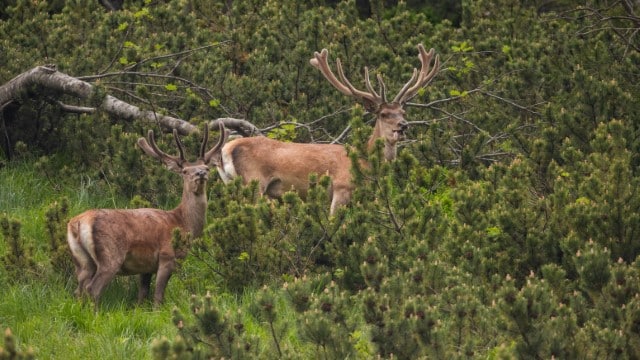
It’s worth mentioning that there are many different types of deer. Antler growth varies from species to species.
Males grow antlers in all deer species. While most female deer don’t grow antlers, female Reindeer actually do.
Climate and genetics can also affect antler growth. If a buck’s father doesn’t have very large antlers, it probably won’t, either.
What Month Do Deer Antlers Grow the Most?
The specific deer and its location impact the months when antlers grow the most.
The seasons are reversed in the Southern Hemisphere. So a deer in that hemisphere would grow their antlers at times opposite to what we see in the Northern Hemisphere.
The weather generally affects the precise month when antlers grow.
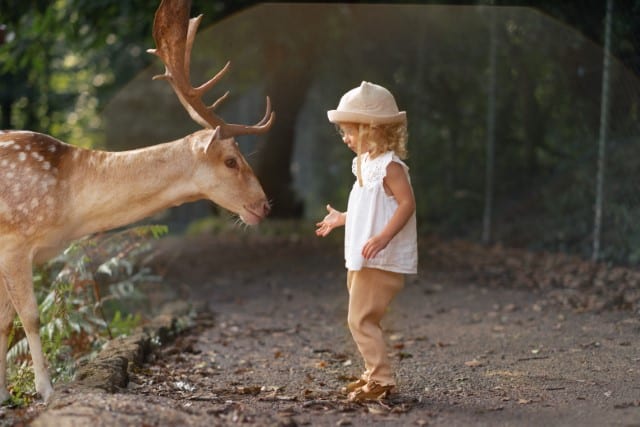
For example, if the rain comes late, so will a deer’s main source of nutrition. When this happens, antler growth will occur later in summer than usual.
Antlers generally start to grow during April or May. At this stage, antlers will be very furry or velvety.
Usually, the most growth will occur during June. Antlers can grow up to an inch and a half per week during the summer.
July is when the antlers begin to harden. Deer will shed the fur of their antlers.
This helps them prepare for the rutting season. Harder, sharper antlers make a deer more competitive.
Shedding antler velvet is not a painful process. People often think that deer are in pain because fur shedding can involve blood.
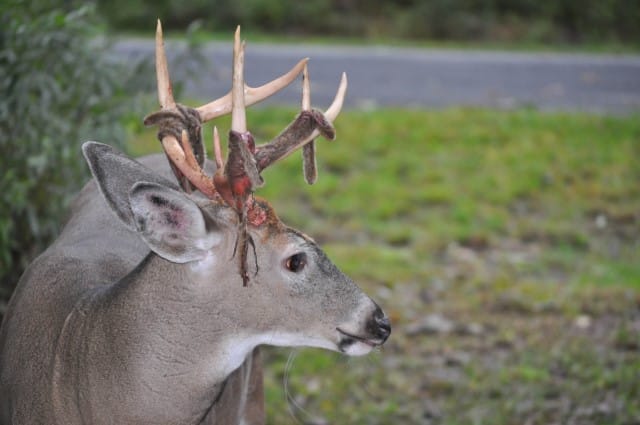
After mating season concludes, all male deer shed their antlers. Deer enthusiasts will look through the forest for shed antlers during this time of year.
The chemical composition of antlers differs from deer to deer and region to region. Most antlers contain high amounts of calcium and magnesium.
Other minerals found in antlers are zinc, sodium, and sulfur.
Trace amounts of other minerals can also be found. These will differ depending on the chemical components of the deer’s diet, and the habitat in which it lives.
Some deer have even been known to consume shed antlers. This might sound strange, but it makes sense considering the amount of nutrients packed in these bones.
How Long Does it Take for a Deer to Fully Develop its Antlers?
It takes a buck spring and summer to fully develop its antlers for the year. A deer’s antlers will be at their height during the mating season.
Antlers will be at their most impressive during September and October for most species of deer. This can vary slightly depending on the year and location.
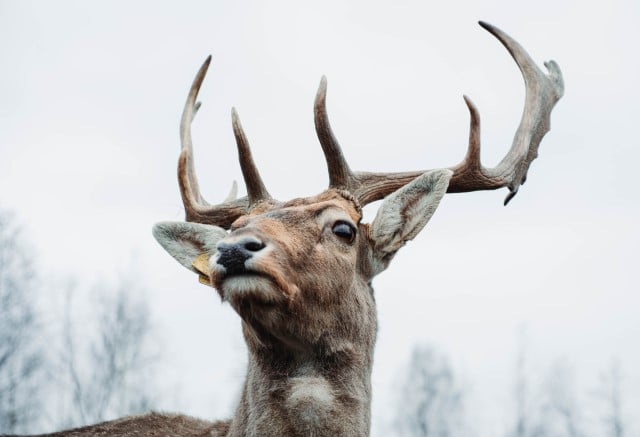
Some species have their mating season earlier or later than others.
In terms of age, a buck’s antlers will reach their height at about six years of age. With every year, the antlers will grow slightly longer. However, deer can experience growth spurts.
Some years antlers might double in size. During other years antlers might not grow by more than a few centimeters.
How Deer Antler Growth Varies by Age
It’s a common misconception that you can tell a deer’s age by its antler length. Yes, a deer in its prime will have longer antlers than a much younger deer, but there is quite a bit of variation.
Nutrition, genetics, and even sunshine influence antler growth and how big a set of antlers will get.
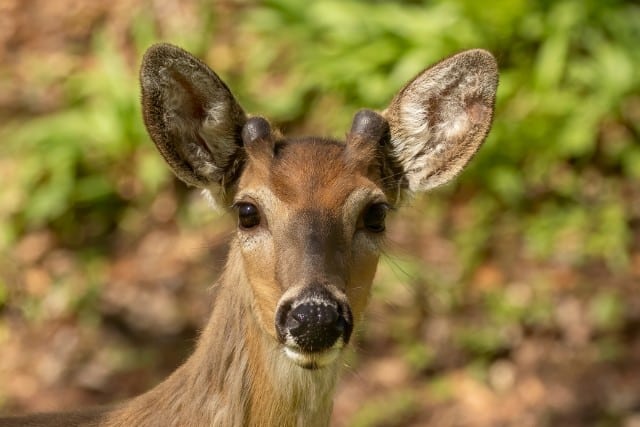
Two bucks that are the same age could have antlers of very different lengths.
Bucks with better antlers will be more successful during the mating process. Some hunters will even avoid shooting deer with impressive antlers so that the next generation will maintain the same characteristics.
After about six years, bucks are less competitive in the mating process. Their antlers will stop growing or even shrink.
In addition to diet and age, hormones play a significant role in antler growth. Deer with higher testosterone levels have larger antlers.
Testosterone levels drop during the last years of a buck’s life. So, it makes sense that their antlers start to shrink with age.
Now You Know When Deer Start Growing their Antlers
Antlers are one of the most impressive deer characteristics. They are also one of the most commonly misunderstood.
Antlers are often mistaken for horns, and there is a misconception that antler length can tell you a deer’s age.
Antler growth does increase with age, but it’s not possible to tell a deer’s age just by looking at its antlers. Factors such as diet, environment, and species affect antler size.
A buck will usually start to grow his antlers at about ten months of age.
Antlers will reach their peak during the summer each year. Bucks shed their antlers during the winter, after the mating season.
In spring, the process starts all over again.

